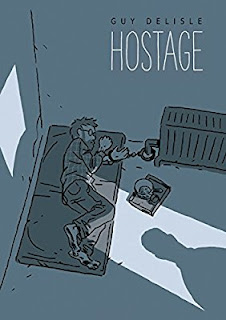The inside cover blurb summarizes the book as follows:
"After a harrowing, otherworldly confrontation in Exmouth, Massachusetts, Special Agent A. X. L. Prendergast is missing, presumed dead. Sick with grief, Pendergast's ward, Constance, retreats to her chambers beneath the family mansion at 891 Riverside Drive-only to be taken captive by a shadowy figure from the past. Proctor, Pendergast's longtime bodyguard, springs to action, chasing Constance's kidnappers through cities, across oceans and into wastelands unknown. And by the time Proctor discovers the truth, a terrifying engine has stirred-and it may already be too late."
The Obsidian Chamber is the 16th Special Agent Pendergast mystery. I have only read one other book in the series, Blue Labyrinth and my lack of knowledge about the series definitely affected how I felt about the book. I felt that it was a little slow. There is alot of back story written into the novel which I needed to know to understand what was happening, but it made the reading less suspenseful for me. The book is described as a thriller by the publisher but I did not feel any thrill. The plot was definitely interesting but because half of the book was back story, it fell a little flat to me.
"After a harrowing, otherworldly confrontation in Exmouth, Massachusetts, Special Agent A. X. L. Prendergast is missing, presumed dead. Sick with grief, Pendergast's ward, Constance, retreats to her chambers beneath the family mansion at 891 Riverside Drive-only to be taken captive by a shadowy figure from the past. Proctor, Pendergast's longtime bodyguard, springs to action, chasing Constance's kidnappers through cities, across oceans and into wastelands unknown. And by the time Proctor discovers the truth, a terrifying engine has stirred-and it may already be too late."
The Obsidian Chamber is the 16th Special Agent Pendergast mystery. I have only read one other book in the series, Blue Labyrinth and my lack of knowledge about the series definitely affected how I felt about the book. I felt that it was a little slow. There is alot of back story written into the novel which I needed to know to understand what was happening, but it made the reading less suspenseful for me. The book is described as a thriller by the publisher but I did not feel any thrill. The plot was definitely interesting but because half of the book was back story, it fell a little flat to me.






